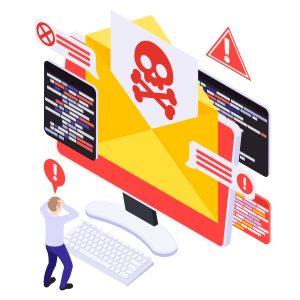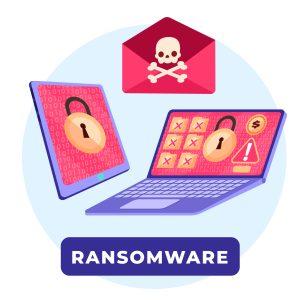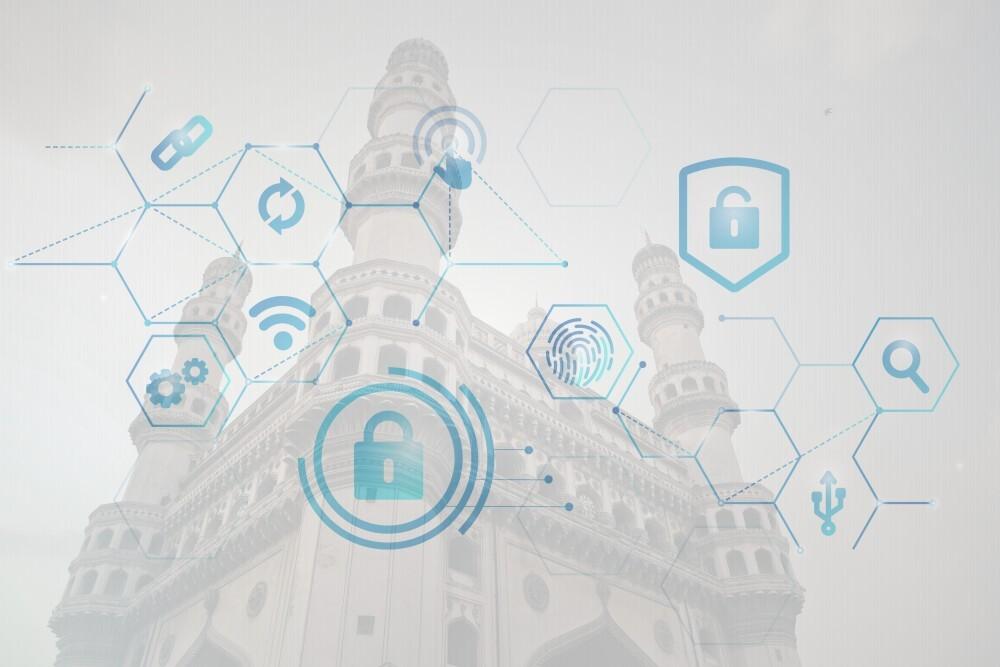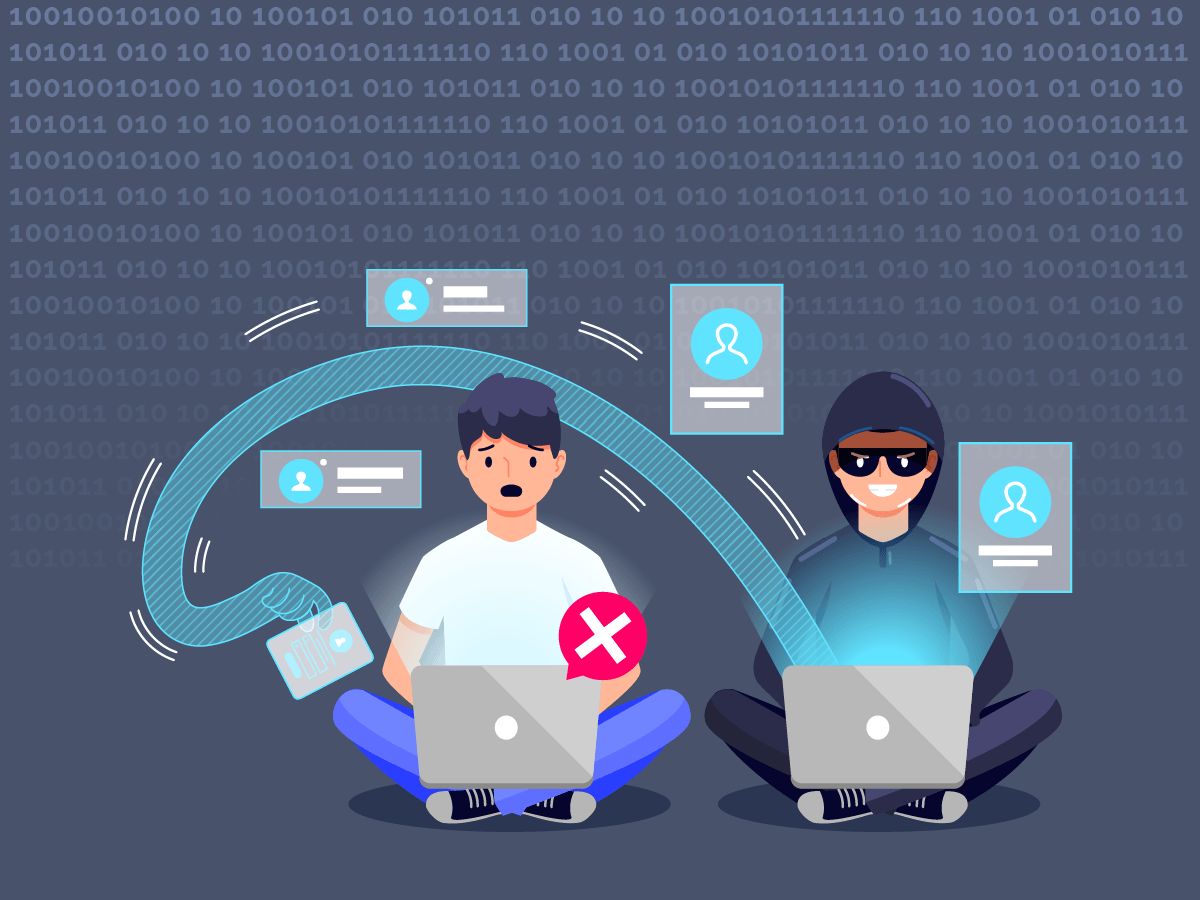
What is a Ransomware Attack?
Ransomware attacks are a type of malware used by cybercriminals to encrypt a device's data, making it inaccessible to the user. The attackers demand a large ransom payment in exchange for the decryption key or unlocking the device. Some ransomware software can also search for sensitive information and send it back to the hackers, who may threaten to publish it online if the ransom is not paid. It is crucial to take preventative measures to avoid falling victim to these attacks rather than paying the ransom.
Who are the Targets?
While anyone can be targeted by ransomware attacks, recent data breaches in 2022 indicate that cybercriminals often target organisations that handle large amounts of personal and sensitive data, as well as those with big user groups and smaller IT teams, such as in healthcare and education.
Types of Ransomware Attacks:
Ransomware attacks have become increasingly sophisticated over the years, with cyber criminals using various tactics to infiltrate and compromise systems.
- Crypto-Ransomware: One of the most common types of ransomwares is crypto-ransomware, which encrypts files and demands a ransom payment in exchange for the decryption key. Some notable examples of crypto ransomware include CryptoLocker, GoldenEye, and WannaCry.
- Locker Ransomware: Locker ransomware is another type of ransomware that blocks access to basic computer functions, displaying a lock screen or popup with a message demanding a ransom payment before access is restored.
- Scareware: Scareware is a type of ransomware that is designed to scare or manipulate users into visiting specific websites or downloading malicious software. This is often done using social engineering tactics and popup ads, with the goal of convincing users to purchase or download software that is malicious.
- Doxware: Doxware is a specific type of ransomware that is used to obtain personal data. Attackers compromise the privacy of individuals by gaining access to sensitive files and photos, which they then threaten to release if a ransom is not paid. This type of attack is often targeted at specific victims.
Finally, Ransomware as a Service (RaaS) is a business model that has gained popularity among cybercriminals. With RaaS, anyone can purchase ransomware tools on the black market and carry out attacks without any coding knowledge.
How Do Ransomware Attacks Happen?
Ransomware attacks can happen through various means, but one of the most common ways is through phishing emails. In a typical scenario, a victim receives an email that appears legitimate, often containing a malicious attachment or a link to a fake website that tricks the user into downloading malware onto their device. Once the malware is installed, it can spread rapidly throughout the network, encrypting files and locking users out of their systems.
Another way ransomware attacks can happen is through exploiting vulnerabilities in software or hardware systems. Cybercriminals can exploit security loopholes in outdated software or weak passwords to gain access to a system and then install ransomware. Additionally, some ransomware attacks may occur through Drive-by-Downloads, where the malware is downloaded onto a device when a user visits a compromised website.
Regardless of the method, ransomware attacks can have devastating consequences, so it is crucial to take proactive measures to prevent them.
Why are Ransom Attacks Rising?
Ransomware attacks have been on the rise in recent years, with cybercriminals continuing to adapt their techniques to exploit vulnerabilities in the changing digital landscape. One of the contributing factors to this trend is the acceleration of remote and hybrid working. With more people working outside the office network, companies have had to set up remote working solutions quickly, often choosing insecure options that create gaps in their cybersecurity defence.
This has made them an easy target for ransomware attacks, which are becoming increasingly sophisticated and aggressive. In addition, there has been a shift in focus from denying access to data to stealing and threatening to leak it, which has proven to be an effective strategy for ransomware gangs.
Another factor driving the rise of ransomware attacks is the financial benefit for the criminals. As companies tend to pay the ransom to regain access to their data, ransomware attacks have become a quick and lucrative way for cybercriminals to make money. This has led to the emergence of Ransomware-as-a-Service (RaaS) providers, who offer the tools and services needed to carry out ransomware attacks to anyone, regardless of their technical expertise.
Best Practices to Prevent Ransomware Attacks
As ransomware attacks advance, organisations must adopt best practices to safeguard against these threats and prevent potential attacks. Here are a few best practices which organisations can implement:
- Employee Training: The initial step is to educate employees on cyberattack risks and teach them cybersecurity practices like strong passwords, avoiding suspicious links/attachments. Phishing and social engineering are common techniques, so training employees to identify and counter such attempts is crucial.
- Regular Backups: Backing up files and applications regularly is another essential practice to prevent data loss in case of an attack. Offline data backups should also be secured and not permanently connected to the networks they are backing up.
- Network Segmentation: This method can help prevent the spread of malware from an infected system to other computer systems. Production and general-purpose networks should be segmented so that if an infected computer infects one of the smaller networks, the ransomware can be isolated before it spreads throughout the entire organization.
- Review Port Settings: Reviewing port settings is also crucial to prevent ransomware attacks, as open RDP ports and Server Message Blocked port 445 are often targeted. Limiting user access privileges and defining user permissions thoroughly can also help prevent ransomware attacks by restricting access to applications, desktops, and files. Adding security layers in line with the Zero Trust model is recommended to ensure control over user access and actions, as even authoriSed employees cannot always be trusted.
What To Do if You are a Victim of a Ransomware Attack?
What can you do if you are the victim of a ransomware attack? Let's check out the most common ways to recover from a ransomware infection.
- Isolate the infected device: Disconnect the infected device from the network to prevent the malware from spreading to other devices.
- Determine the type of ransomware: Identify the type of ransomware that has infected your device, as this can help determine if there is a known decryption tool available.
- Contact Law Enforcement: Report the attack to law enforcement, as this can aid in investigations and potentially lead to the apprehension of the attackers.
- Do Not Pay The Ransom: It is not recommended to pay the ransom, as there is no guarantee that the attackers will decrypt your data. Paying the ransom also encourages the attackers to continue their criminal activities.
- Restore Data From Backups: If you have backups of your data, restore the files from the backup. It's essential to make sure the backups are not also infected with the ransomware before restoring the data.
- Consider Professional Help: In some cases, it may be necessary to seek professional help from a cybersecurity firm to decrypt the data or assist in the recovery process.
- Improve Security: After the attack, it is important to review your security measures to prevent future attacks. Ensure that your software and operating systems are up-to-date and that your employees are trained in cybersecurity best practices.
The Cybersecurity Centre of Excellence (CCoE) is a dynamic tech ecosystem of startups, companies, and innovators based in Hyderabad, India. Our primary mission is to develop
effective cybersecurity solutions, foster a safe cyberspace and make India the global
cybersecurity hub. CCoE is a joint effort between the Government of Telangana and DSCI,
created to boost India's IT ecosystem. We achieve our goals by incubating startups, organizing workshops, providing training programs, participating in local and international initiatives, and much more.
Visit our website: https://ccoe.dsci.in
Download our intuitive resources: https://ccoe.dsci.in/resources/





